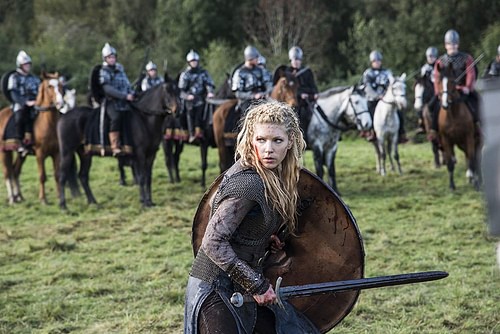
Lagertha (also spelt Lathgertha or Ladgerda) is a legendary Viking shieldmaiden known from Saxo Grammaticus' early 13th-century CE Gesta Danorum. In this work, written in Latin and concerning Danish history, she is the first wife of Ragnar Lothbrok, a legendary Viking king said to have lived during the 9th century CE. Contrasting with the prominent role Lagertha plays in the ongoing Vikings TV series, where she is portrayed by Katheryn Winnick, the Gesta Danorum is the only historical source that even mentions her and ties her in with the more broadly-known Ragnar mythos, making her more of a footnote within his legend rather than a core element. She makes for a bold footnote, though, and an interesting character in her own right; brave and skilled, she is twice responsible for ensuring victory for Ragnar in battle. Although classical concepts of Amazons underlie Saxo's warrior women, his stories are rooted in the Old Norse traditions known from medieval Icelandic literature. Specifically, Lagertha herself may have been inspired by the Norse goddess Thorgerd, local to Hálogaland, Norway.
The Gesta Danorum
Saxo sets the stage for Ragnar and Lagertha's meeting by describing how the Swedish King Frø has slain Siward, King of the Norwegians, who was Ragnar's grandfather, and has publically humiliated Siward's female family members by putting them in a brothel. Ragnar, having just succeeded his father Siward Ring (Sigurd Hring or Ring in other Ragnar stories) to the throne of Jutland in Denmark, hears of this and is obviously not pleased. Coming to Norway with vengeance on his mind, Ragnar is met at his camp by some of the women who had been scorned, dressed up in male attire and ready to join him to hunt down the Swedish king. In the ensuing successful battle, it is one maiden in particular who stands out to Ragnar; he even goes so far as to attribute the victory to her might alone. This is, of course, Lagertha, who is described by Saxo as
…a skilled amazon, who, though a maiden, had the courage of a man, and fought in front among the bravest with her hair loose over her shoulders. All marvelled at her matchless deeds, for her locks flying down her back betrayed that she was a woman. (IX).
As if the fighting skills of the legendary warrior were not enough to set Ragnar's heart aflame, he also hears she is of noble birth, so he instantly starts courting her long-distance by sending messages to her home. Saxo tells of Lagertha feigning interest and basically leading Ragnar on while she sets up an advanced defence system around her house in the Gaulardal valley (in present-day Norway): a bear and a dog stand guard on her porch, ready to tear her would-be lover to pieces. When Ragnar travels to her home thinking he is in for an easy win, he meets the guardians who – although a surprise to him – prove no match and fall to his legendary skills, one speared and one strangled to death. Lagertha becomes Ragnar's prize, and in their subsequent marriage, they have two unnamed daughters as well as a son, Fridleif.
Three peaceful years Ragnar spends in Norway before unrest in his own Danish kingdom calls him back there. At this point, Saxo's account turns to more familiar waters when it comes to the Ragnar legend. He introduces King Herodd of Sweden – known from the main source on Ragnar, The Saga of Ragnar Lothbrok, as Herruð, jarl of Götaland in Sweden – whose daughter Thora has been raising a bunch of snakes who grow out of control. Herodd offers his daughter's hand to whoever can rid them of their slight problem, and Ragnar,
…changing his love and desiring Thora (…), divorced himself from Ladgerda; for he thought ill of her trustworthiness, remembering that she had long ago set the most savage beasts to destroy him. (IX).
He fashions the characteristic hairy trousers that give him his epithet (Loðbrók means shaggy- or hairy breeches), leaves his son Fridleif in charge of his men and goes to fight the snakes alone. Afterwards, his mission fulfilled, he marries Thora.
Thora is a well-known, core element in the various Ragnar stories, and Lagertha here thus features in a sort of prologue. However, this is not the end of her involvement in the story as laid out by Saxo. She remarries and is later asked by Ragnar for aid in his squabbles in his homelands. Not only does Lagertha agree to this and offer 120 ships "to the man who had once put her away" (IX), she herself once again plays a decisive role in the battle. When hope is wavering, Ragnar's son Siward is wounded, and all seems to be lost, Lagertha turns the tide:
Ladgerda, who had a matchless spirit though a delicate frame, covered by her splendid bravery the inclination of the soldiers to waver. For she made a sally about, and flew round to the rear of the enemy, taking them unawares, and thus turned the panic of her friends into the camp of the enemy. At last the lines of Harald became slack, and Harald himself was routed with a great slaughter of his men. (IX).
Saxo ends Lagertha's character arc on a brutal note. He states that when she came home after the battle, she murdered her husband with a spear-head that she had hidden in her dress, usurped his name and began ruling in his stead. For this episode, she is denounced by him as a "most presumptuous dame" (IX).
Literary Context & Inspiration
Although Saxo's Gesta Danorum lays out a history of the kings of Denmark, it is only the later books (from volume X through to the final one, volume XVI) that actually concern historical kings, reigning up to 1185 CE. The first nine books, in which Lagertha's story is included, are more of a prologue containing many legendary tales and figures; they are believed to be largely fictional. Although clearly influenced by Old Norse traditions, the precise sources from which Saxo gathered his legends are not yet entirely understood. Where it concerns his portrayal of Ragnar Lothbrok, Saxo appears to have relied on many different stories known to him, perhaps attempting to reconcile the various versions. There was probably no historical Ragnar underlying his stories, though; instead, he may well be an amalgam of various historical persons merged together into one mythical hero. Lagertha, then, would be an insertion into Saxo's specific take on Ragnar's story, but what inspired Saxo to add her while she is absent from the other extant works concerning him is not entirely clear.
As to the inspiration for Lagertha's character, specifically, one good suggestion that has been put forward is that Lagertha may be connected with the Norse goddess Þorgerðr Hǫlgabrúðr – anglicised as simply Thorgerd. A temple was dedicated to her in Gudbrandsdal, Norway, in the 10th century CE. In the sources she frequently crops up together with jarl Hákon from Hálogaland (Hákon Sigurdsson, r. c. 975-995 CE), even being referred to as his wife. She was probably a sort of local deity in those parts. Jarl Hákon lived at Hlaðir (Lade), and the name Lagertha (Hlaðgerðr in Old Norse) could plausibly stem from Hlað(a)-Gerðr. Gerðr was a giant-daughter in Norse mythology, and the word gerðr itself means 'embrace', forming a common part of Old Norse female names. Besides the name, according to Saxo, Lagertha lived at Gaulardal, which lies nearby and was apparently the nexus of Thorgerd's cult. The Icelandic mythographer Snorri Sturluson (1179-1241 CE) even names Gaulardal as the home of Hákon's wife. Finally, Saxo's description of Lagertha flying around to Ragnar's aid seems to parallel the description in the medieval Icelandic Flateyjarbók manuscript of Thorgerd and her sister Irpa coming to Hákon's aid.
Another story that might be connected with the Lagertha legend is Hálfdanar Saga Brönufóstra, a saga which tells the story of Halfdan, son of King Hring of Denmark. It was written about a century after Saxo penned down his Gesta, so bear in mind the direction of any possible inspiration here. Notable is not only the fact that Lagertha's first husband Ragnar Lothbrok is broadly known as the son of King Hring of Denmark, but also the presence in Halfdan's story of a woman named Hlaðgerðr. She is the ruler of the Hlaðeyjar islands. When Halfdan first visits her, he gives her many riches and she tells him he can knock on her door if he ever needs anything. Later, after adventuring in England, he returns to the islands and Hlaðgerðr gives him 20 manned ships, here as well as in Saxo's Gesta, resulting in a victory for the recipient of the ships.
As for the Old Norse name Hlaðgerðr, Niels Lukman spots a link with more southerly regions: a similar name was used among Frankish ladies, most famously by Liutgard of Saxony (c. 845-885 CE), wife of the East Frankish ruler Louis the Younger, and Luitgarde of Vermandois (c. 914-978 CE), wife of William Longsword of Normandy. Other spelling variations are Leutgarde and Ledgarde; a tempting similarity to Hlaðgerðr, for sure.
Lagertha the Warrior
Lagertha's origins aside, it is clear that in Saxo's work she fulfils a role not immediately expected of historical women of that time but instead of a more legendary proportion: that of the warrior woman. Despite present-day popular imagination running wild with the image of the 'strong Viking woman', when critically evaluated the archaeological and historical material is not at all sufficient to support their existence. The Old Norse sagas, however, are a different beast altogether and show strong women taking action, stoking up revenge, standing up to their husbands or even engaging in fights. The popular TV series Vikings, although creatively expanding Lagertha's role massively from that which it is in the Gesta, does take her reputation as shieldmaiden on board and shows her as a strong fighter who can hold her own, even participating in the raid on Paris (in the show, inspired by the historical siege of Paris of 845 CE).
Within the other legends revolving around Ragnar Lothbrok, Lagertha does not stand alone as a shieldmaiden. Aslaug (Kráka) is another wife of Ragnar, and she eventually leads her sons into battle against the Swedes, among others diffusing the terrible powers of their magical cow.
Saxo would thus have had plenty of material to work with within Europe's northern traditions. However, a more foreign influence may also be detected in his work. As Judith Jesch explains,
His warrior women owe a lot to classical concepts of Amazons. (…) Many of Saxo's fantastic tales in the first nine books have parallels in Old Norse literature (…). Despite their amazon heritage, then, Saxo's women warriors must be seen in the context of Old Norse traditions preserved in Icelandic literature. (Jesch, 178).
Lagertha is even directly described as a "skilled amazon" (IX). Although Saxo usually focused on female warriors going solo, Lagertha is more closely connected with Ragnar, directly assisting him in battle twice. While his descriptions of her prowess are pretty neutral, when her story culminates in murdering her husband and taking the throne for herself, Saxo slips in his general disapproval of her. Legend or no legend, this "presumptuous dame" had better not be an example to other ladies.
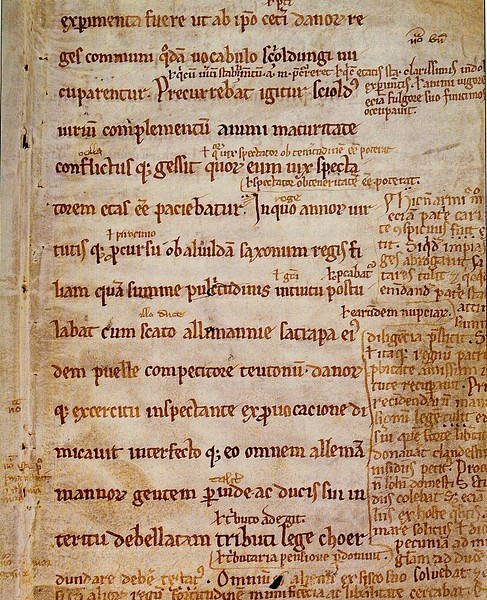
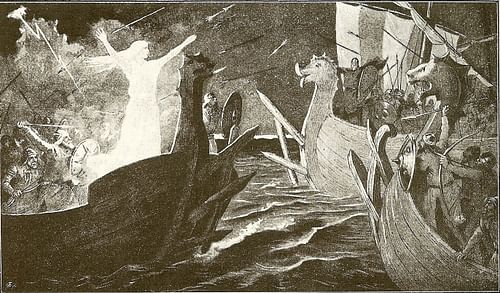
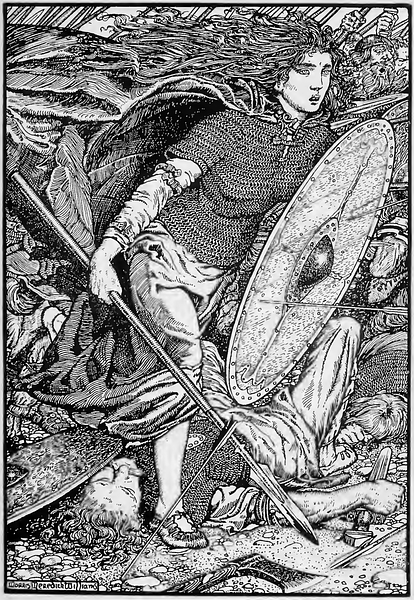

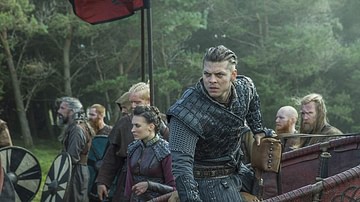
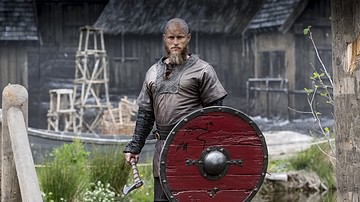
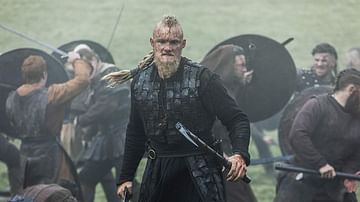

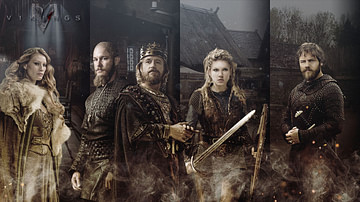
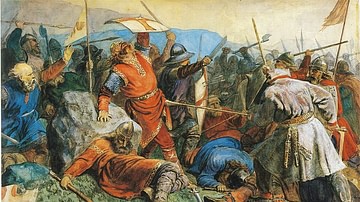


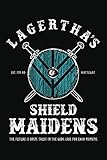
![Ragnar Lothbrok and a History of the Vikings: Viking Warriors including Rollo, Norsemen, Norse Mythology, Quests in America, England, France, Scotland, Ireland and Russia [3rd Edition]](https://m.media-amazon.com/images/I/419xvLtkCiL._SL160_.jpg)
